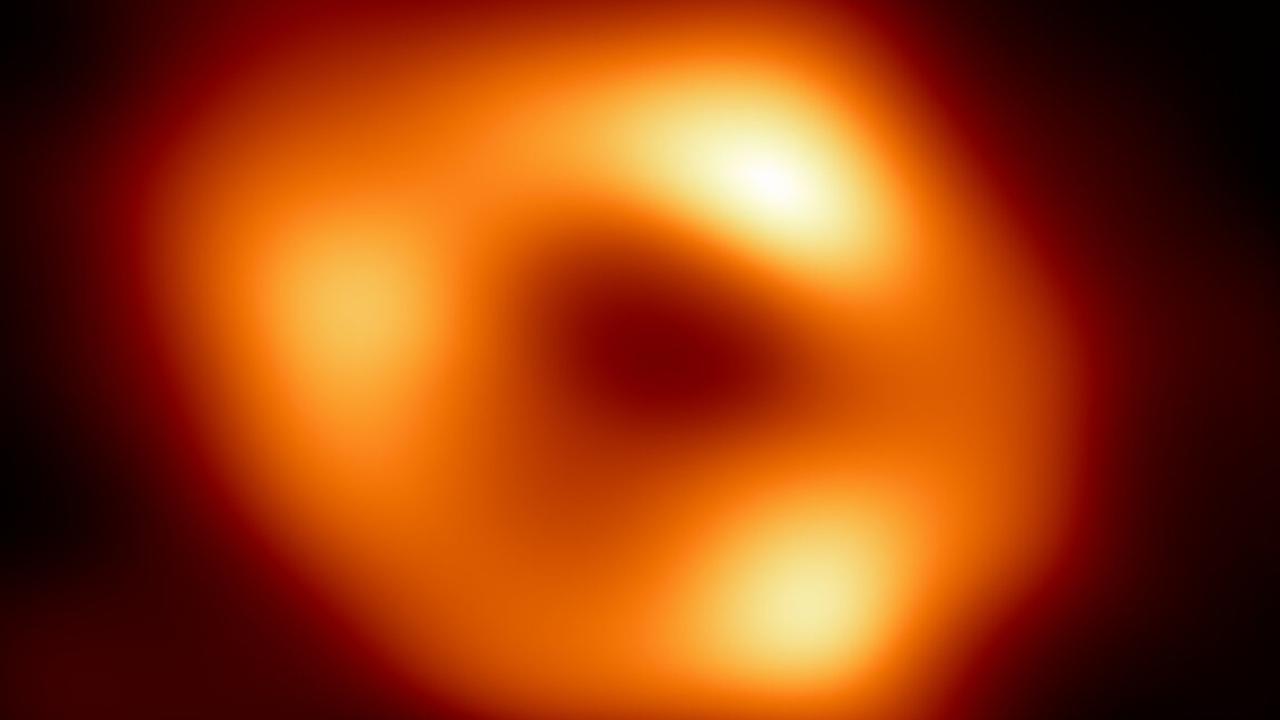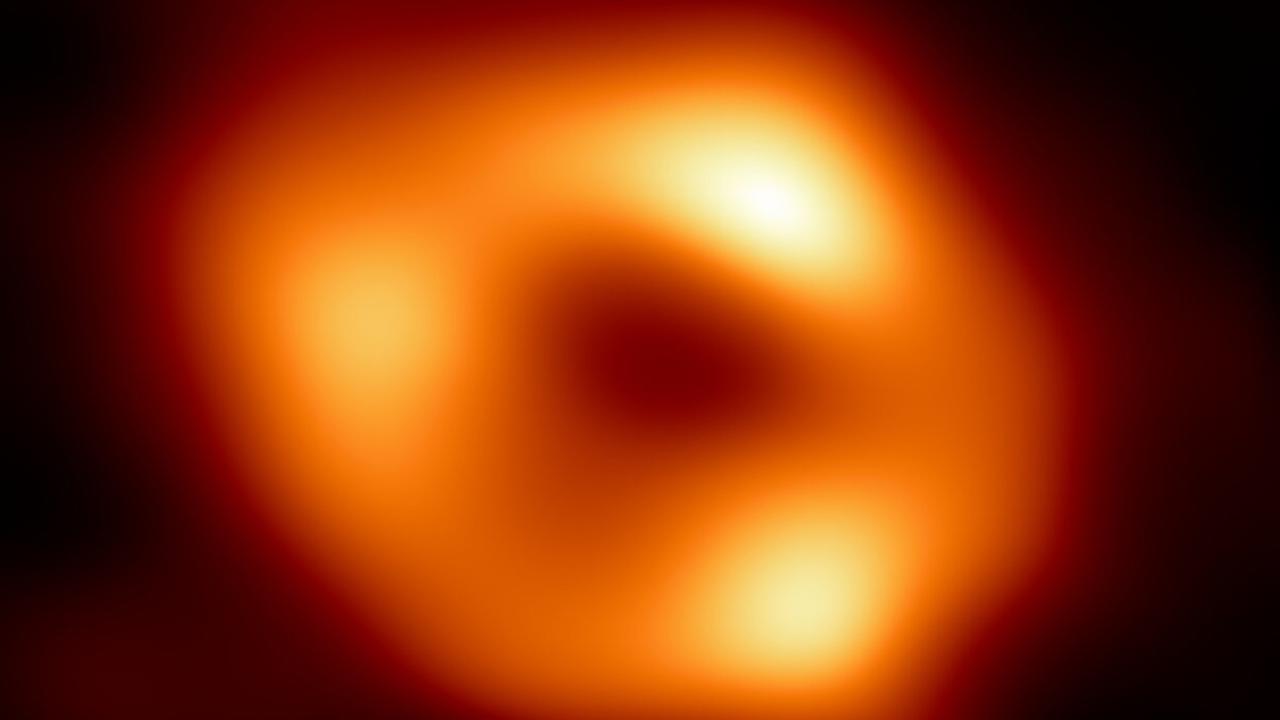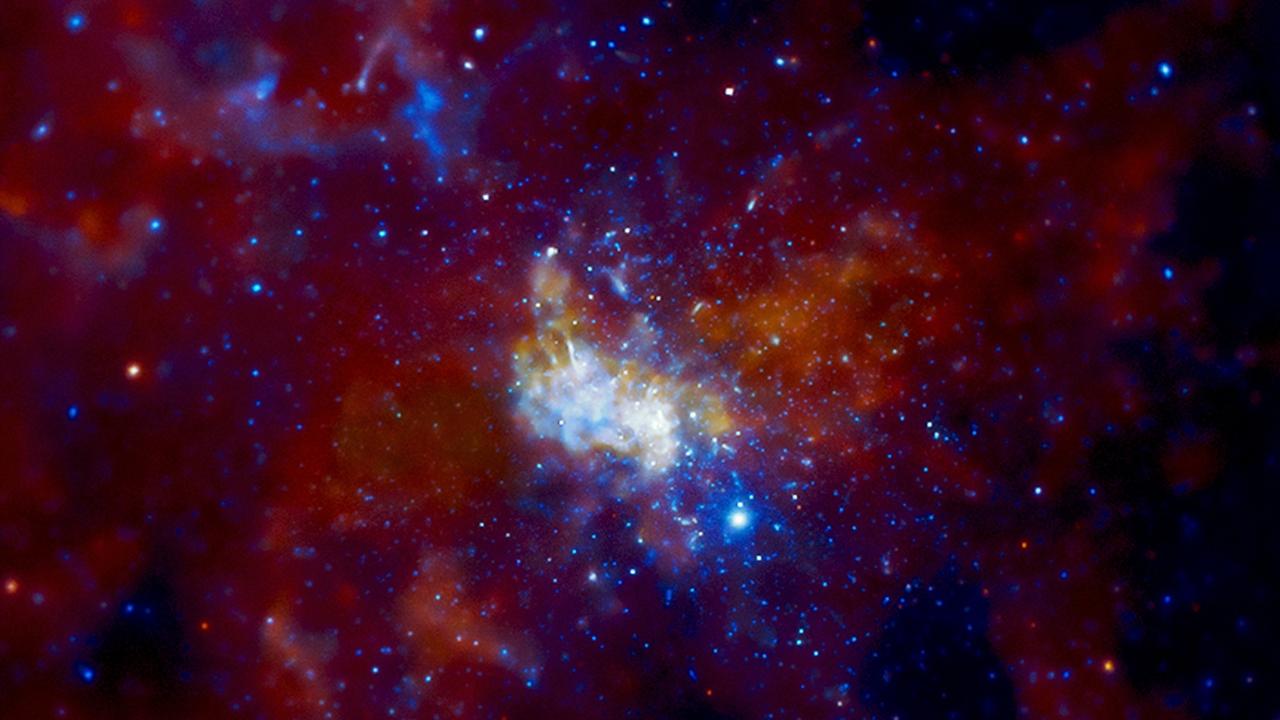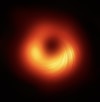First look at the monster black hole at the centre of our galaxy
Scientists have revealed the first images of a giant black hole right in the middle of our solar system.

For the first time, scientists have revealed the first picture of a giant black hole at the centre of our galaxy.
It sounds like something out of a sci-fi blockbuster, but this latest space discovery is very real. Australia’s astronomer-at-large has called the image “staggering”.
The international team of astronomers on Thursday unveiled the first image of the supermassive black hole at the heart of the Milky Way galaxy – a cosmic body known as Sagittarius A*.

“It’s very exciting to show you today this best-ever image” of Sagittarius A*, Event Horizon Telescope (EHT) project director Huib van Langevelde told a press conference in Garching, Germany.
The EHT team’s results were published in The Astrophysical Journal Letters.
Professor Fred Watson, Australia’s astronomer-at-large for the Department of Industry, science, Energy and Resources, said the image’s “resemblance to a humble cream doughnut belies the extraordinary technological achievement it represents”.
“The image is a staggering illustration of how far astronomical science has come since I started my research career in the 1970s, because I, too, observed objects near the centre of our Milky Way Galaxy.
“They were stars, seen through the haze of dust between our Solar System and the galactic centre, and visible only as faint pinpoints of light. At the magnification of the EHT, they would look like discs of light with starspots visible on them.”
Distinguished Professor Susan Scott from the Centre for Gravitational Astrophysics at The Australian National University said the picture was “extraordinary”.
“Throughout human history, we have wondered what was at the centre of the Milky Way. Well, now we have an image of it.
“The supermassive black hole conforms to the predictions of Einstein’s theory of general relativity. It’s remarkable how his theory, from just over a century ago, continues to stand up, despite our tests of it becoming more and more probing and exacting.”

New image similar to 2019 black hole picture
It is the second time the EHT has captured images of a black hole after, in 2019, it unveiled the first-ever footage of one at the centre of the Messier 87 (M87) galaxy, some 55 million light-years away.
That image revealed a bright yellow and red ring of superheated gas and dust around the M87 black hole.
Since then, the EHT’s international network of observatories has focused its attention on capturing Sgr A* (pronounced “sadge-aye-star”), in the hope it will unveil the secrets of the Milky Way’s evolution, and prove the existence of event horizons – or a black hole’s “point of no return”.
Black holes suck in everything around it, including light.
So pictures of the celestial beings aren’t of the black hole itself, which is effectively invisible, but the glowing gases that surround it.
“These unprecedented observations have greatly improved our understanding of what happens at the very centre of our galaxy,” said EHT project scientist Geoffrey Bower, of Taiwan’s Academia Sinica.
Mr Bower also said in a statement provided by the French National Centre for Scientific Research (CNRS) that the observations had offered “new insights on how these giant black holes interact with their surroundings”.
What is the Sgr A* black hole?
First detected in 1970, the Sgr A* black hole was pinned down in the 1990s by two separate US and German teams that studied the precise movements of stars in the middle of our galaxy. Movement, they determined, that could only be possible under the influence of a black hole.
NASA estimates Sgr A* is about 27,000 light-years away from Earth – roughly 9.5 trillion km away, or the distance light travels in one year.

It is but a baby in the supermassive scheme of things, at around 4 million times the mass of our Sun. That is tiny compared to the M87 black hole which is far bigger and brighter, with a mass of around 6.5 billion Suns.
Why does Sgr A* matter?
Scientists believe that supermassive black holes like Sgr A*, which have collapsed under their own immense gravity, form some kind of “event horizon” barrier that, once crossed, cannot be escaped.
But, the Sgr A* black hole is unique in that there isn’t a star large enough or close enough to directly collapse into a black hole of its size. It’s hoped capturing footage of this black hole will reveal its origin, and the evolution of the Milky Way millions of years ago.
Have we seen it before?
Until now, our view of Sgr A* has been limited to the material flying around it.
In 2010, the Chandra X-ray observatory took a snapshot of the centre of our galaxy that showed the remains of a massive explosion near Sgr A* and large bubbles of hot gas extending for a dozen light-years on either side of it, as well as mysterious X-ray filaments.
The EHT team previously modelled what they suspect the black hole might look like, but the simulation is fuzzy due to the gas and dust around its crushing gravitational centre.

How you can see the black hole
If regular telescopes won’t do the trick, you can bet our regular human eyes won’t cut it either.
But the EHT will be announcing their discovery in a simultaneous news conference which you can watch live via their YouTube stream or via Facebook.





